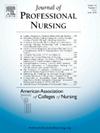Navigating challenges and cultivating connections: Faculty experiences teaching RN-BSN students
IF 2.8
3区 医学
Q1 NURSING
引用次数: 0
Abstract
Background
Success in completing an RN to BSN program largely depends on program quality, flexibility, and accessibility, as well as faculty ability to help students navigate several complex factors. Research specific to the RN-BSN student experience suggests that faculty teaching in RN-BSN programs must be respectful of diverse learners' needs, mindful to avoid bias and reduce stigma, and capable in creating equitable learning spaces. Faculty must also make content relevant to support immediate use by students in the workplace. Yet, little is known about faculty's actual experiences teaching RN-BSN students.
Purpose
The study purpose was to describe nurse faculty experiences teaching RN-BSN students.
Methods
A qualitative descriptive design, informed by naturalistic inquiry was used to address the study purpose.
Findings
RN-BSN faculty (N = 15) from across the United States participated in semi-structured interviews. Faculty preparation to teach RN-BSN students varied widely. Three themes, one with two sub-themes, emerged from the participant data.
Conclusions
Faculty teaching in RN-BSN programs needs adequate preparation and resources aimed at supporting student learning. Recommendations include suggested policies, practices, and resources to support faculty teaching RN-BSN students.
迎接挑战,建立联系:教师教授 RN-BSN 学生的经验
背景成功完成 RN 至 BSN 课程在很大程度上取决于课程的质量、灵活性和可及性,以及教师帮助学生驾驭若干复杂因素的能力。针对注册护士到本科护士(RN-BSN)学生经历的研究表明,在注册护士到本科护士(RN-BSN)项目中任教的教师必须尊重不同学生的需求,注意避免偏见和减少成见,并有能力创造公平的学习空间。教师还必须使教学内容具有相关性,以支持学生在工作场所的直接使用。然而,人们对教师教授 RN-BSN 学生的实际经验知之甚少。研究目的:本研究旨在描述护士教师教授 RN-BSN 学生的经验。教师在教授 RN-BSN 学生方面的准备情况差异很大。结论在 RN-BSN 项目中任教的教师需要充分的准备和资源来支持学生的学习。建议包括支持教师教授 RN-BSN 学生的政策、实践和资源。
本文章由计算机程序翻译,如有差异,请以英文原文为准。
求助全文
约1分钟内获得全文
求助全文
来源期刊
CiteScore
4.80
自引率
8.00%
发文量
153
审稿时长
52 days
期刊介绍:
The Journal will accept articles that focus on baccalaureate and higher degree nursing education, educational research, policy related to education, and education and practice partnerships. Reports of original work, research, reviews, insightful descriptions, and policy papers focusing on baccalaureate and graduate nursing education will be published.

 求助内容:
求助内容: 应助结果提醒方式:
应助结果提醒方式:


